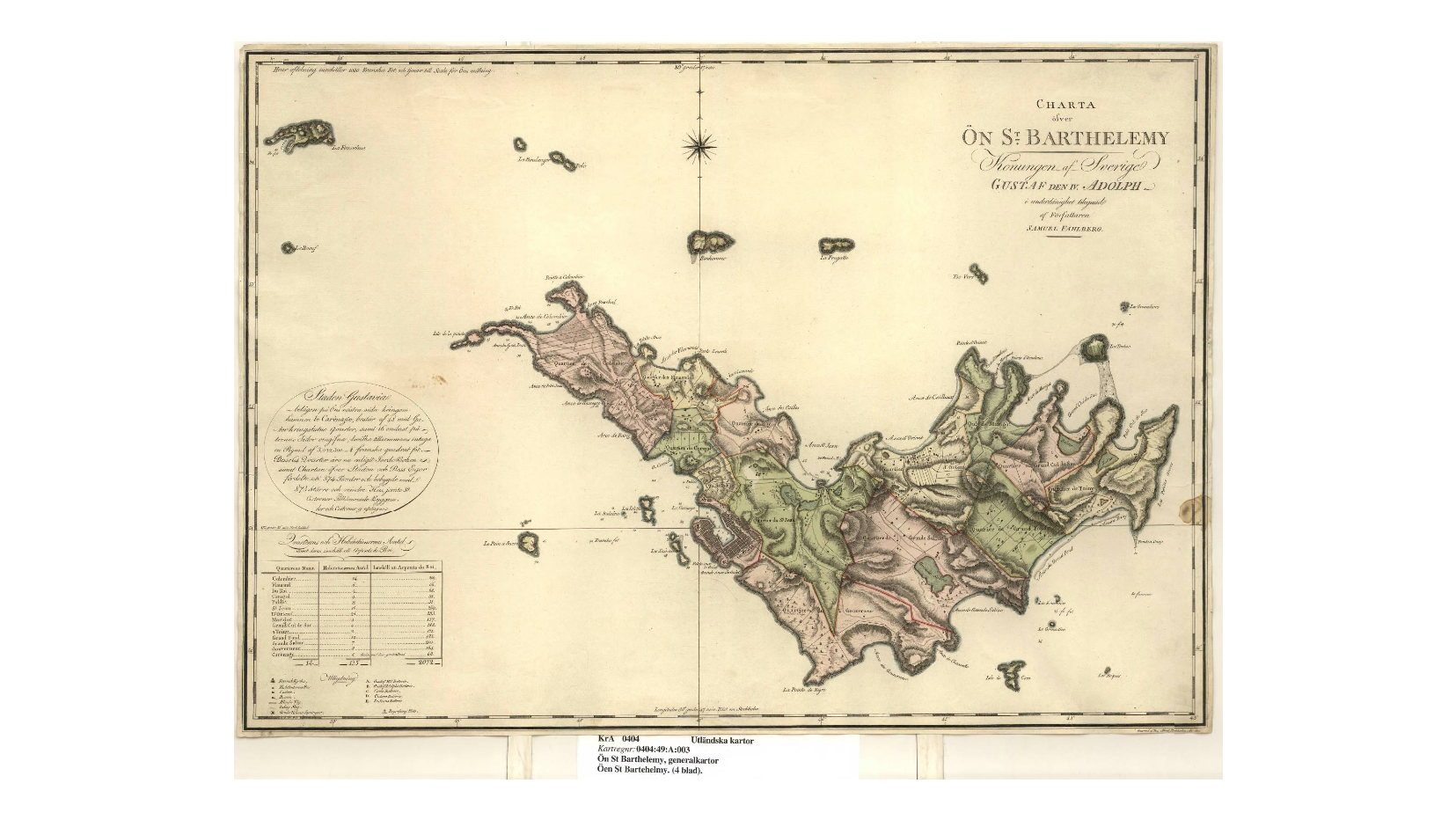Franska Tomten as Plot
Franska Tomten (“the French Plot”, today formally named Packhusplatsen), is a plot of land in the city’s harbor that in 1784 was exchanged for the Caribbean island of Saint Barthélemy as part of an trade deal between Sweden and France. Until 1847, Saint Barthélemy was a hub for transatlantic slave trade. In 1878, the territory was sold back to France.
At Franska Tomten there is no official commemoration of this part of Sweden’s history and its victims. But there are a number of artworks commissioned in the 1940s by Gothenburg’s modern day transatlantic shipping companies
that testify to the fact that the unequal relations and racial stereotyping underpinning the colonial ideology continued long after colonialism as such had purportedly come to an end. The structural racism and global inequality of our own times are contemporary examples of this.
Today, the former Broström shipping palace houses a court of justice. In the historical harbor’s customs house there is a casino and, until recently, a museum of migration. Reflecting on the colonial history of the plot through the activities occupying the site today reveal interrelated flows of goods, bodies, capital, and ideology spanning centuries and geographies. Just as the writing of law is historically bound up with regulations of international trade, the global circulation of capital is directly connected to routes of migration.
In the biennial, Franska Tomten is used as a starting point and narrative device. Through the artworks, the biennial traces this plot outwardly to where it meets other places, voices, and histories. The site’s past is mirrored in the present, and Gothenburg harbor in other parts of the world.
Lisa Rosendahl, curator

